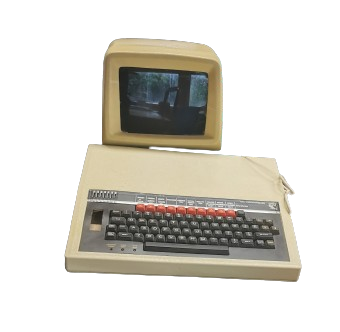 We have a "Bondi Blue" iMac G3 Computer in our Technology through Time Collection.
We have a "Bondi Blue" iMac G3 Computer in our Technology through Time Collection.
The iMac G3 was a series of personal computers which Apple marketed between 1998 and 2003. It was designed to be an affordable desktop computer.
It had an "all-in-one" design, which was based around a cathode ray tube display, and a striking "teardrop-shaped", blue translucent plastic case. It did not include "older" technology such as floppy disc drives, but instead focused on newer technology such as USB ports.
Although the design attracted some criticism, with people citing that the mouse was uncomfortable to use and the lack of older technology was unhelpful, the computer series was extremely successful, and became Apple's fastest-selling computer with more than five million in sales.
 Valves are electronic switches, first invented in the early 1900s. They were used in radios, and later radar and television, up until the 1960s when transistors took over. Colossus was built in 1943 under such secret conditions that very few people knew about and it did not become public knowledge until the 1970s. It was designed to help decode secret messages sent by the Germans from their headquarters in Berlin during World War II. There is now a working replica at the National Museum of Computing at Bletchley Park.
Valves are electronic switches, first invented in the early 1900s. They were used in radios, and later radar and television, up until the 1960s when transistors took over. Colossus was built in 1943 under such secret conditions that very few people knew about and it did not become public knowledge until the 1970s. It was designed to help decode secret messages sent by the Germans from their headquarters in Berlin during World War II. There is now a working replica at the National Museum of Computing at Bletchley Park. The ZX Spectrum was released in the United Kingdom in 1982.
The ZX Spectrum was released in the United Kingdom in 1982. We have a "Bondi Blue" iMac G3 Computer in our Technology through Time Collection.
We have a "Bondi Blue" iMac G3 Computer in our Technology through Time Collection. We have a 1980s BBC Micro Computer and Monitor in our Technology through Time Collection.
We have a 1980s BBC Micro Computer and Monitor in our Technology through Time Collection.